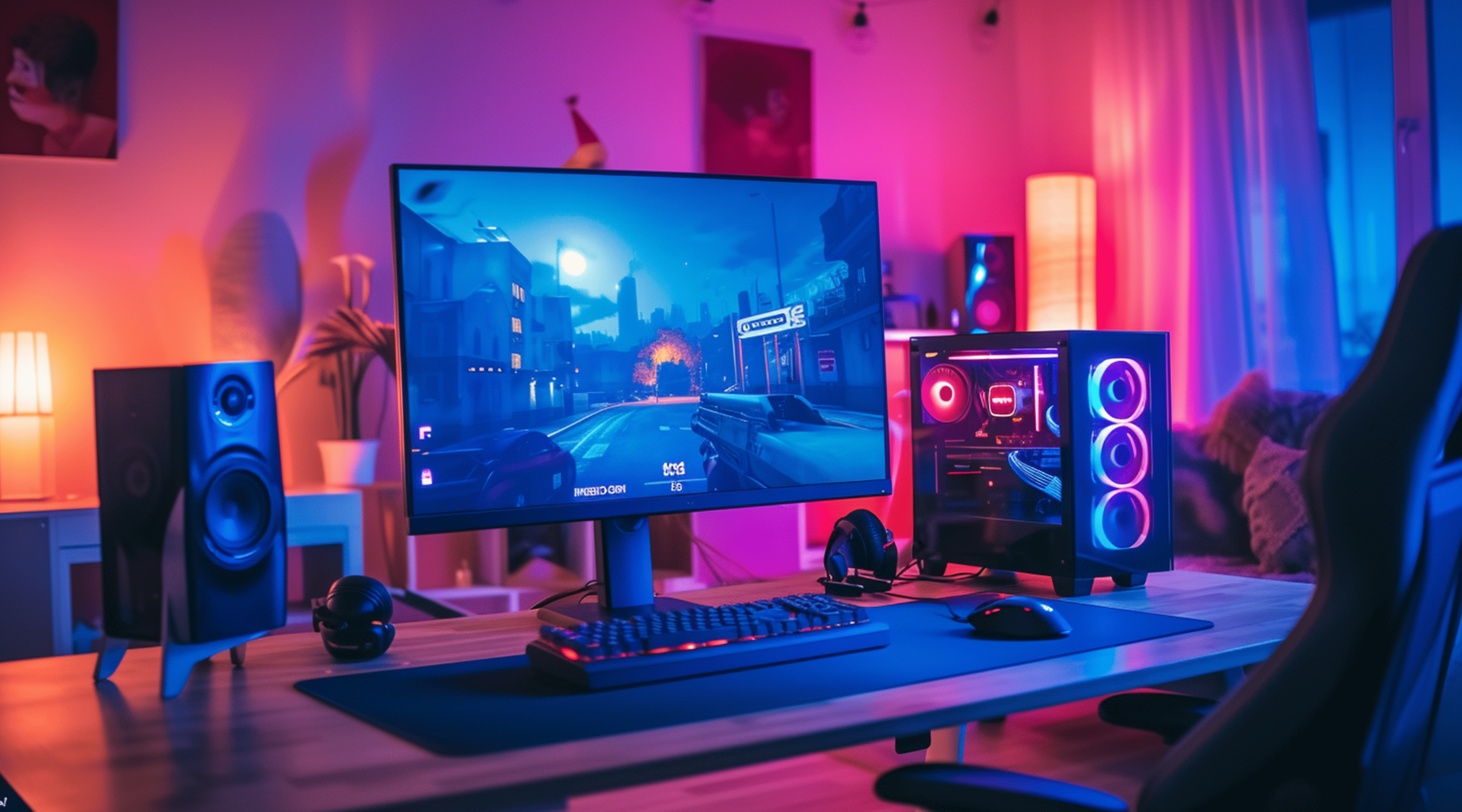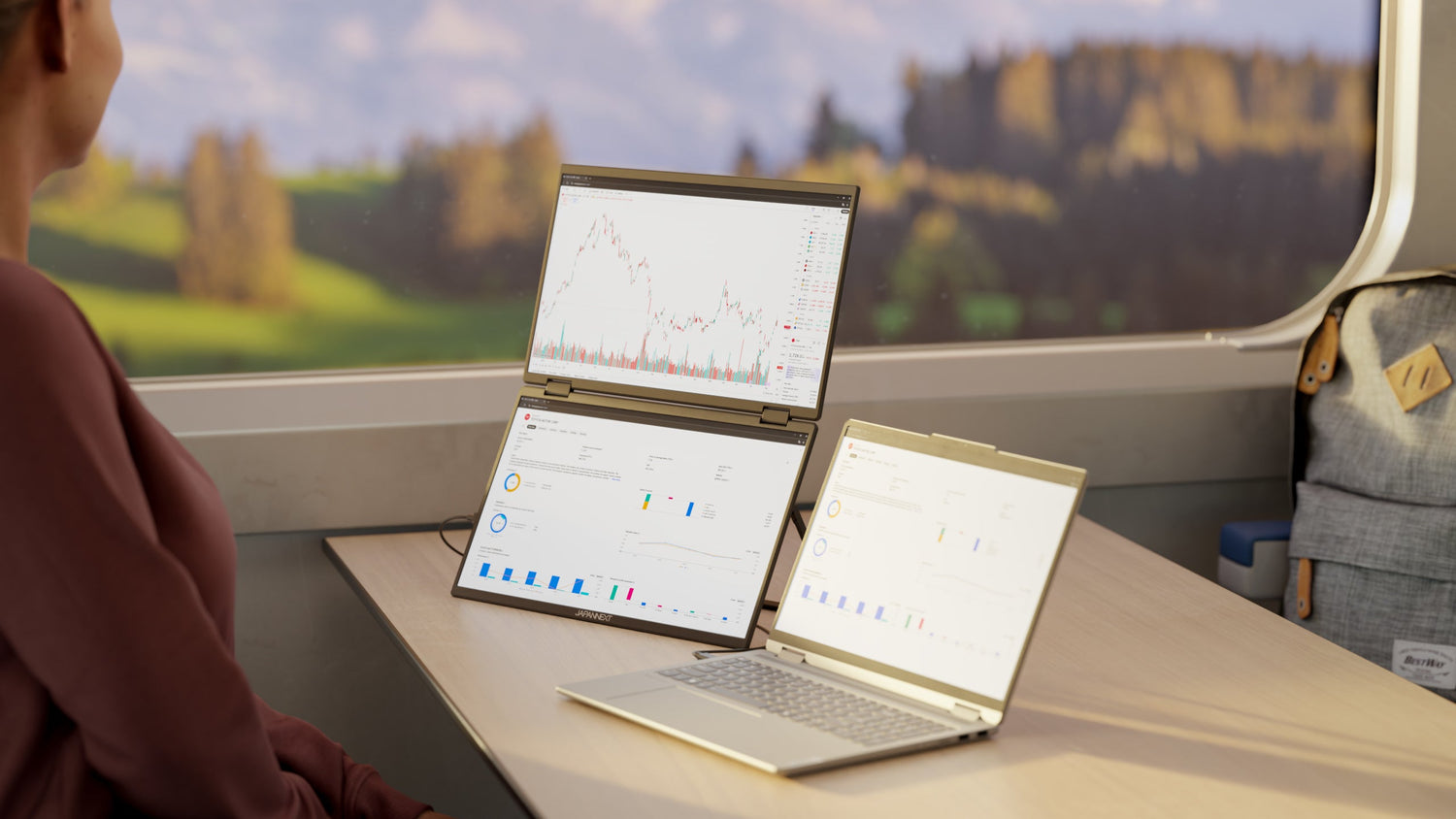How to choose the right monitor for an optimal gaming experience?
As a specialist in gaming monitors , we know how crucial choosing the right monitor for FPS games can be to your gaming performance. Your monitor is a critical bridge between your actions and their visual representation in the video game, especially in FPS games where every millisecond counts. Modern competitive gaming requires perfectly adapted hardware to maximize your potential, and your choice of monitor should not be left to fate.
The critical importance of refresh rate
Refresh rate is the most important criteria for any serious FPS gamer. On a modern monitor intended for competitive gaming, we recommend a minimum of 240 Hz for optimal fluidity. This high frequency allows for more frames per second, significantly reducing input lag and providing unparalleled responsiveness in intense gaming situations.
To understand the importance of refresh rate in FPS, you need to know that a typical 60 Hz monitor displays a new frame every 16.7 milliseconds. In comparison, a 240 Hz gaming monitor refreshes the image every 4.16 milliseconds. This significant difference allows you to spot and react more quickly to your opponents' movements. The latest generations of monitors even reach 360 Hz, further reducing the delay between each frame.
Response time, crucial for FPS
In shooting games where precision is key, the response time of your monitor must not suffer from any compromise. A high-performance gaming monitor for FPS must imperatively offer a response time of 1ms GtG (Gray to Gray). This technical feature guarantees the absence of ghosting and afterglow, two particularly annoying phenomena during the fast movements typical of FPS.
Response time directly influences the sharpness of moving objects on your monitor. Too high a response time will create trails behind moving objects, making it harder to track targets in fast-paced FPS games like Apex Legends, Overwatch, or Valorant. Modern overdrive technologies can optimize this response time without generating overshooting, another defect that can disrupt image readability in gaming.
The ideal resolution for competitive gaming
Unlike popular belief, the resolution race is not a priority for competitive FPS players. Pro gaming monitors are mostly Full HD (1920x1080), prioritizing performance and fluidity over pure definition. This resolution makes it easier to achieve the high framerates needed to fully exploit a refresh rate of 240 Hz or more.
However, QHD (2560x1440) is an excellent compromise for FPS players looking to combine performance and visual quality. This intermediate resolution offers better sharpness than Full HD while remaining less demanding than 4K for your graphics card. It is particularly suitable for 27-inch monitors, a format favored by many competitive gamers.
Display technologies for gaming
The choice of panel significantly influences your FPS experience. Monitors equipped with TN panels remain favored by many competitive gamers for their unbeatable response time. However, the latest IPS gaming panels are quickly catching up, offering similar performance while providing better image quality and superior viewing angles.
New OLED technologies are also making their appearance on the gaming monitor market. They offer infinite contrasts and almost instantaneous response times, ideal for FPS. Their only drawback remains the risk of marking, although manufacturers have developed various technologies to minimize it.
The importance of adaptive synchronization
For an optimal FPS gaming experience, your monitor must have adaptive sync technology. These technologies eliminate tearing and stuttering, two particularly disruptive phenomena in fast-paced video games. Modern gaming requires this feature to ensure consistent fluidity.
FreeSync and G-Sync technologies dynamically adapt to the frame rate of your graphics card, ensuring perfect synchronization between the game rendering and the display on your monitor. This synchronization is particularly valuable in FPS games where the slightest stutter can cause you to miss a crucial target.
Ergonomics at the service of performance
A high-performance gaming monitor must offer extensive adjustment possibilities. The height, tilt and rotation of the screen directly influence your gaming comfort and, by extension, your FPS performance. The support must be robust to avoid any vibration during intense gaming phases.
Ergonomics also includes the quality of the display surface. Effective anti-glare treatment is essential for extended gaming sessions, as are blue light reduction technologies that preserve your visual comfort without altering the colors essential for detecting enemies in FPS.
Advanced features for gaming
Modern monitors offer FPS-specific features like built-in crosshairs, FPS counters, and preset game modes. These options, while not essential, can significantly improve your gaming experience and give you a competitive edge.
The latest innovations include image stabilization technologies, dark area visibility filters, and motion blur reduction systems. Some gaming monitors even integrate dedicated processors to optimize image processing and reduce overall system latency.
Connections and compatibility
To fully exploit the performance of your monitor in FPS games, connectivity plays an essential role. DisplayPort is the standard to take advantage of high refresh rates, while HDMI 2.1 offers an interesting alternative for recent configurations.
The addition of a USB hub and an audio output makes it easy to connect your gaming accessories such as a headset, mouse or keyboard. Some monitors even offer KVM sharing features, allowing you to quickly switch between multiple sources while keeping your peripherals connected.
Conclusion
Choosing a monitor for FPS requires careful attention to essential technical features: high refresh rate, minimal response time and suitable panel technology. At JAPANNEXT, we rigorously select our gaming monitors to guarantee an optimal experience for the most demanding players. Performance in video games necessarily requires suitable hardware, and your monitor is a crucial investment to reach your full potential in FPS.
The constant evolution of monitor technologies and the emergence of new standards such as HDMI 2.1 or OLED panels promise ever more immersive and responsive gaming experiences. By choosing a monitor suited to your gaming needs, you ensure that you have high-performance equipment for years to come.



